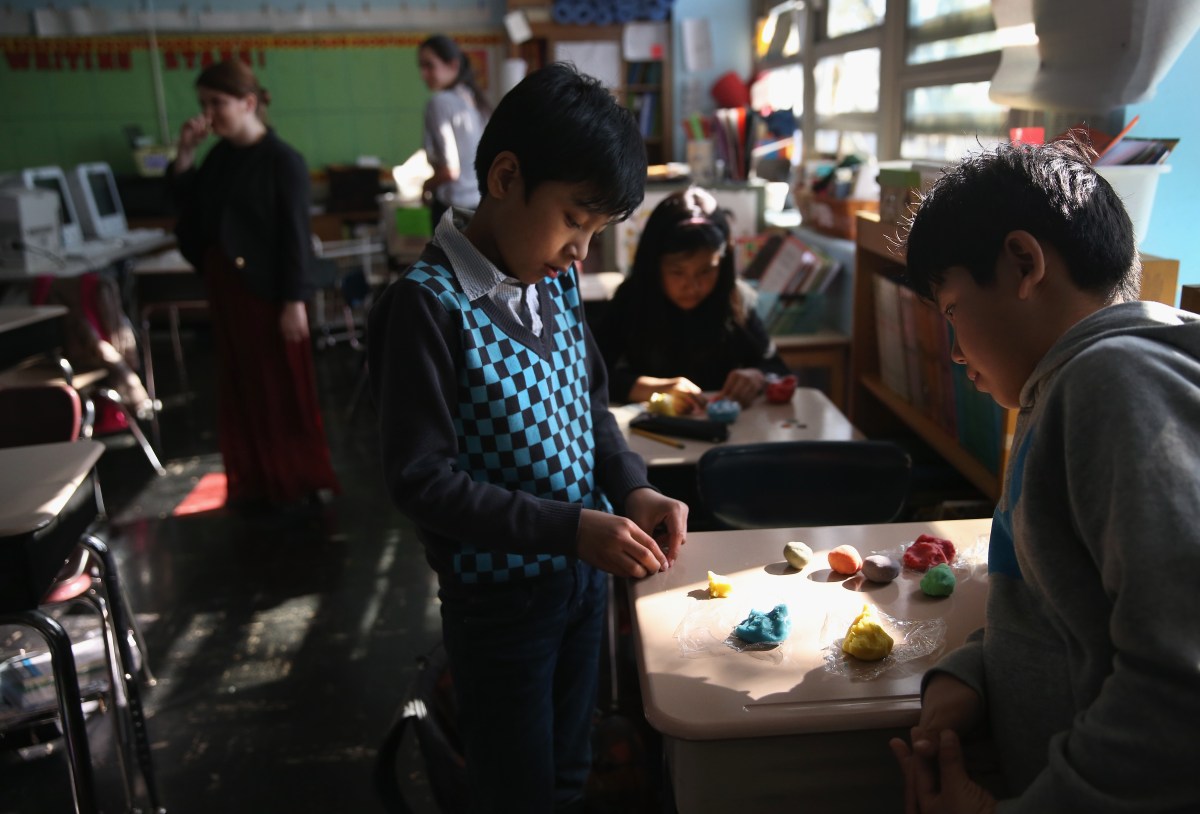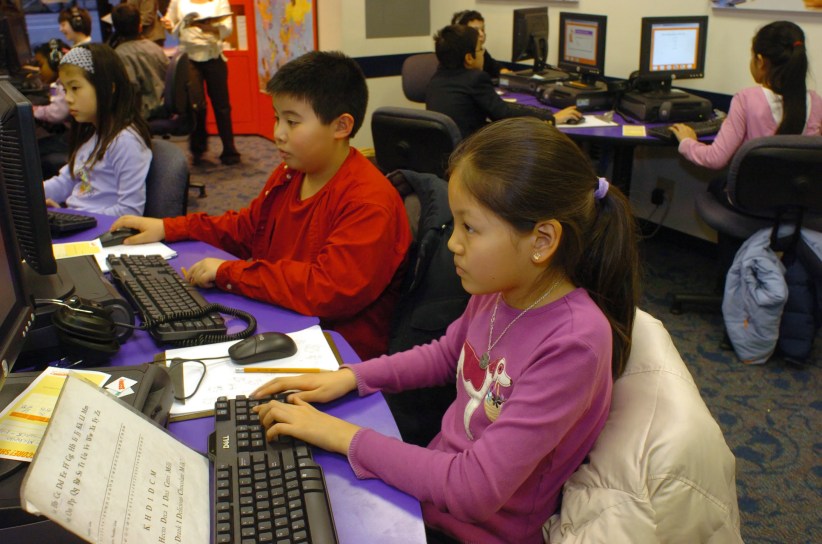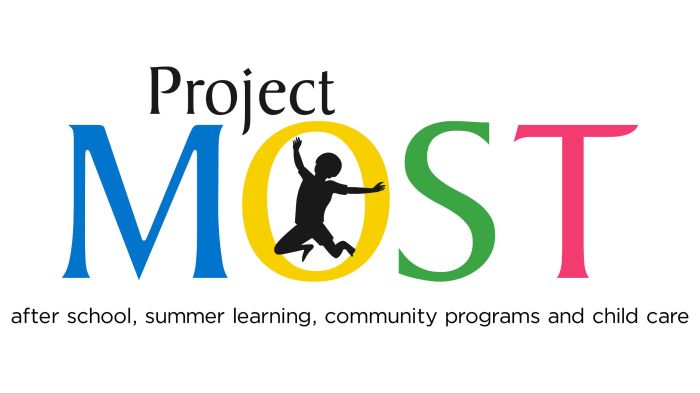Elizabeth Green, education journalist and co-founder and CEO of the education news organization Chalkbeat, believes that to fix America’s education system, we must focus on our most valuable resource: Teachers. We sat down with Green—whose respect for teachers became transcendentally clear—to discuss her book, Building A Better Teacher: How Teaching Works (And How To Teach It To Everyone).
Tell us about your background in journalism and education. How did you come to write this book?
I’ve always covered education as a journalist, and that came out of my social justice concerns beginning when I was in high school in the DC area. My school was like Stuyvesant put inside a large, struggling high school. It was very class and race segregated, and I became fascinated and troubled by the gaps in my own high school and became interested in the politics of education, especially race and class issues. Then in 2009, I was assigned to write about this new, big political issue: Teacher quality… As I got into the story, I realized we were all thinking about this fundamentally the wrong way, because while there are a lot of politics at play, the bottom line is education, and how teachers and students work together in schools. I came to see everything I had covered in a different light…and that’s why I was determined to write this book. I want to help other people see how teaching really works and what it really takes, because then we can start a conversation about what it will really take to improve schools.
To me, the book is a social history of effective teaching innovation and where it took hold, where it didn’t, and the challenges it’s faced along the way.
Yes, and I was surprised to find that there’s a fascinating story of people trying, over the last century, to treat teaching as a craft and being repeatedly foiled in that effort. I want to help readers see what great teaching looks like, and can look like, and the way our innovation efforts are stymied.
Do you think that the teachers who read your book will be surprised by your findings?
I’ve been excited to see teachers’ early responses to the book, because until now the dialogue about teaching and teachers has been infused with political rhetoric that is so detached from the day-to-day reality of what that job entails, and that disconnect is responsible for a lot of justifiable anger from teachers today. There have been two main policies being promoted to try and change [teaching]: One is the idea of accountability—that teachers aren’t trying hard enough, that if we put consequences on the line, then they’ll really start to try. The other policy is [to give them more] autonomy… [because] teachers will choose to do what’s best for their students. There are 3.8 million teachers in this country, and you could count on your hand the number of them who are deliberately lazy. But if they’re completely free to do whatever they want, that’s its own form of insanity. To me, teaching is such challenging and important work, nobody should be recreating the wheel on their own. There’s a [need] for a new conversation that’s not just about accountability or autonomy. What we need is support to do the work so we can really help kids.
One of the most powerful experiences you had was in Japan. How is a Japanese classroom lesson structured differently than an American lesson?
In most American math lessons and most school lessons, the structure is what teachers call I/We/You. So I do, we do, you do. The class starts with the teacher saying: “Today we’re going to learn about long division, I’ll show you the steps for long division. I’ll give you a sample problem and walk through the steps.” Then the next part is trying an example together…and the final part is: “Everyone open up your textbook, we’re going to go through practice problems.” So I’m going to do it, you’re going to do it together, and then you, the student, will do a bunch of practice problems. In Japan, the structure of a lesson is radically different. Instead of I/We/You, it’s structured in what I call You/Y’all/We. The class starts with a problem assigned to all students to work through on their own. Instead of many problems, throughout the course of the lesson, there’s only one problem for the class… If you use a really good problem, you can get a lot out of it. If you use a small problem you repeat in multiple ways, you’re just repeating the same simple idea multiple times. A bigger problem can help kids dig in… After they work on a problem (you), they work on it together (y’all), and then there’s a classroom discussion, and these are amazing, beautiful pieces of art. You take the group nature of the classroom and turn it into an advantage.
How do the teachers teach each other there? You found that it was hard for a Japanese master teacher to explain the difference to his American cohorts because we don’t have a word for it.
Japanese teachers begin from the premise that teaching is a craft, and something they need to get better at over time. If you’re going to do that with teaching, one fundamental thing is required—you need to see other people teach, and have other people watch you teach. In the US, teachers rarely have anyone see them work, other than their students… [In Japan], there’s a culture of regularly having public lessons that other teachers come to see…Because of the structure, Japanese teachers become kind of famous among each other. The more famous teachers will attract a thousand people to their lessons, and these lessons will be held in an auditorium… In Japan, they say: “I’m going to present to you the thing I’m struggling the most with.” The public lessons are the kinds of pedagogical ideas that are the most challenging. They’re creating a laboratory… The master teacher is trying out something new and different in front of his peers so everyone can figure out together what’s going on.
One of the themes in your book is that teaching largely is something that can be taught.
A few reasons I came to think that is that a lot of research has been done to isolate the personality trait that is connected to effective teaching, and despite thousands of studies—it’s not extraversion, not warmth, there’s nothing. On the other hand, there’s the fact that researchers studying great teachers have found that they have a special kind of knowledge and skill set. When the same researchers give tests on this knowledge to professionals—like a mathematician getting tested on the knowledge that a third great teacher needs to teach addition and subtraction the professionals will fail those tests.

Reading this book as a parent, it occurred to me that a lot of parents who take an active interest in their kids’ schooling and homework really may not be helping them learn.
You’re getting to the most amazing thing that great teachers do. Great teachers are able to guide students without doing it for them—they do that by constructing great experiences for kids to have… The whole point of education is that kids aren’t going to learn it all on their own. There’s something we think we can accelerate in their learning socially and academically, by having them be taught. But if you do it for them, and you don’t have them thinking, there’s not much gained. They won’t retain what they were working on, they won’t learn to think. That is why teaching is a craft… The hardest thing for teachers is the same thing that’s hard for parents—how do I walk that line so that I’m truly guiding them without over-guiding them? There are ways to do that that teachers can learn. What parents can do is try to think of their children as learners, and be curious about their children’s minds. If you can find ways to look inside your child’s mind, that’s the beginning of what any great teacher is doing. You have to start by understanding what the student knows and understands and that opens a lot of possibilities.
Why is it seemingly impossible for teacher education that works in other countries to work here?
One of the characters in the book is a researcher, David Cohen, and he studied the American school system and compared it to other school systems like Japan’s. He realized that what teachers need is not unlike what students need. They are learners of another kind. Like students, teachers need some kind of common experience… In American schools, we have at least three different levels of governance telling schools and teachers what to do, often all in conflict: The federal government level, the state level, the district level, the school level and even, in some cases, the department level… As a result, it’s hard for teacher education to prepare teachers to go into a field with any number of random sets of things they are expected to do. In Japan, there’s a single national course of study, which you would think might restrict freedom or something, but in fact it unleashes creativity. Coherence is totally absent in the US. We have many sets of standards, different sets of assessments, different sets of teacher education policies, and different textbooks, and so the teacher is left to cobble together her own approach, because the resources she has to learn from are incoherent.
Is Common Core a response to that? Is it a good idea?
Common Core is an attempt to create coherence in an American system that’s built against coherence. You can even see that in the challenge of getting Common Core adopted by states… The hope of the reformers who put together the Common Core is that we get aligned assessments and curriculum and textbooks, and there can actually be a coherent thing we’re all doing as a country, so teacher education can prepare people to do something concrete. Then, teachers can learn from each other, whatever state or school or district they’re in.
How do you make sure that Common Core tests are good, and that teachers don’t feel like they have to spend all their classroom time teaching to the test? How could we create a more coherent system?
I find that one helpful example to look at is a small group of high performing charter schools who create their own governance and systems, create their own teacher evaluations and assessments, and they put a lot of resources into helping teachers learn… I think we’ve learned all the wrong lessons from charter schools. We assume it’s a corporate sort of model… But the best businesses treat workers as learners, so it’s really important to have accountability, but it’s also really important to have ways to help teachers learn how to do what they need to do.
Give me the ideal scenario: How does the world of teaching change? And then what’s the more realistic scenario?
The ideal scenario starts with people changing the way they understand the profession of teaching, so that nobody ever again says: “She must be a natural-born teacher.” That idea is completely gone, and we create a culture where teachers are given the opportunities they need to learn this amazing craft. So there are public lessons digitally and otherwise where people can attend other teachers’ classrooms and learn from each other. And students all begin to get the chance to learn at the highest levels… And the coherence would exist—we’d have a clear idea of what we’re trying to accomplish, and then ways of constantly improving those coherent goals. The best teachers would be writing the textbooks and helping each other learn to teach… The realistic scenario is that change takes a lot of time. We have deeply embedded American ideas that are opposed to what it will take to accomplish the changes that I’ve just described. We reject ideas that we think are kind of anti-individualistic. We want teachers to have autonomy to do their creative thing. We don’t want anyone to be telling anyone what to do, and we don’t want to have common standards or goals that we’re trying to accomplish together, and that’s going to make it harder.
To learn more about Chalkbeat and Elizabeth Green’s work, visit Chalkbeat.org.























